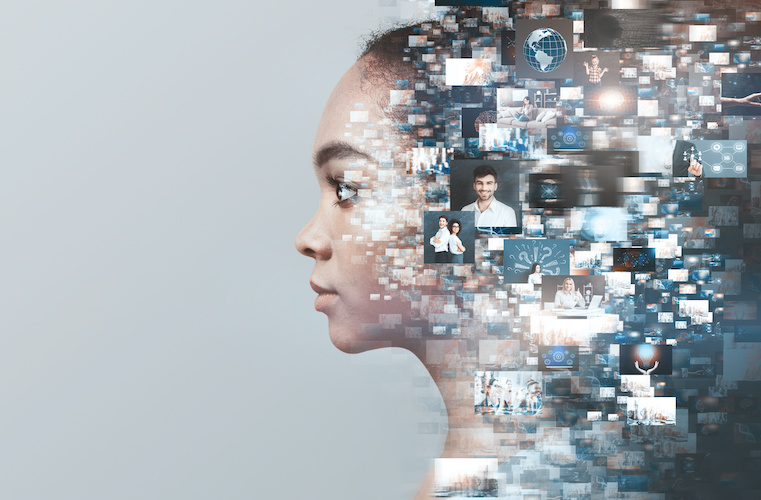Talent leaders and learning scientists typically define “hybrid learning” as an approach that combines online instruction with more traditional classroom pedagogy. It’s a term with which we’ve all become very familiar over the past two years, as remote learning becomes an ever more normal part of the education and training experience.
But in a labor market that is increasingly defined by the need for digital skills, due to both the ongoing impact of the pandemic and the accelerating pace of technological change, is it time to rethink that definition?
New research from Emsi Burning Glass and General Assembly indicates that a growing number of jobs, in fields ranging from marketing to operations, require a mix of digital and professional skills. Funnily enough, these occupations were originally referred to as “hybrid jobs” — an apt, if unintentional, parallel to hybrid learning. Today, in an increasingly digital world of work, we more often refer to those roles as just “jobs.” But to meet the demands of an ever more dynamic economy, preparing for those jobs may mean it’s time to redefine hybrid learning as well.
What would happen if we reimagined hybrid learning as “learning that equips workers for hybrid jobs,” and built a new approach from there? That’s the question we’ve been working to answer at General Assembly, where our work with employers across a range of fields — from the tech industry to retail and manufacturing — has helped us understand what it takes for learners to be successful in the digital age. Our learning philosophy focuses on four key goals, which could form the building blocks of a new definition of hybrid learning.
1. Learners want to find belonging in a field or community of practice.
Just because the economy is becoming more digitally driven doesn’t mean human relationships are obsolete — just the opposite, in fact. When learners feel connected to their field and have strong relationships with people in the community, their whole learning experience improves: They are more willing to take risks, more receptive to feedback and more engaged. As such, the best learning environments help learners explore new careers, including the day-to-day life and job tasks and the values and norms of people in those communities — while building strong connections with people further along in the journey.
2. Learners are beginning on a path to expertise.
Ultimately, the goal of learning in the workplace is the development of expertise. And as individuals make their way from novice to expert, the way they think actually changes. Novices have limited experiences to draw from, so they haven’t seen concepts, processes or tools applied in a variety of settings or seen their flexibility and limits. But as they get more experience, their thinking gets faster, more fluent and more adept at detecting underlying patterns. So, to refine the adage, practice makes automatic!
On the other hand, defining and navigating the path to expertise takes more than just an expert trying to explain what they do. It takes good instructional design to break down learning into a pathway from novice to expert, allowing learners to practice and receive feedback in increasingly complex situations. Good hybrid learning must provide the kind of instruction that benefits novices, even though it’s usually being designed and implemented by experts.
3. Learners are developing competencies to excel in job tasks.
For learning to be most efficient, the tasks required for success in any job and job level should be broken down to discrete competencies. Unfortunately, this job task-oriented step is often overlooked. Think of how many training programs or job postings list general skills (i.e., Python, data visualization, communication) or aren’t aligned to specific skills and competencies. What does it actually mean to know Python, and how do we know when someone has mastered that skill, in what contexts they can use it independently or at what level of complexity they have proficiency?
Learners, employers, and instructors should be aligned on what exactly a learner will learn and be able to do, with which tools and in what context. Job training experiences such as apprenticeship programs, employer academies or other employer-led programs do a great job of connecting formal learning with opportunities to practice, receive feedback and expand complexity in clear job contexts.
4. Learners should build self-directed learning skills.
Good training programs help students understand what is needed to accomplish specific tasks. But no matter how well any learning program prepares someone to do a job, it can never equip learners for all the contexts they will encounter. Learners need to develop adaptive expertise to tackle new contexts, technologies or problems through time, experience and high-quality feedback. For this reason, adult learners need to develop self-directed learning skills, including how to define their own learning goals and figure out what learning opportunities will best get them there.
The future of hybrid learning may be broader than just the difference between remote and in-person experiences. Instead, it’s about building a set of processes and experiences that meet the needs of learners navigating a complex, volatile world of work. Instead of thinking solely about how to impart new skills in different modalities, can we expand the conversation on hybrid learning to focus on helping learners find their place in a community of practice, managing the journey from novice to expert, and mastering self-directed learning skills?
Just as “hybrid jobs” have become “jobs,” the old definition of “hybrid learning” that mixes in-person and online experiences is fast becoming just “learning.” It’s incumbent on employers, training providers and learners themselves to ensure that as we navigate that shift, we’re building a more meaningful and productive learning experience in the process.















